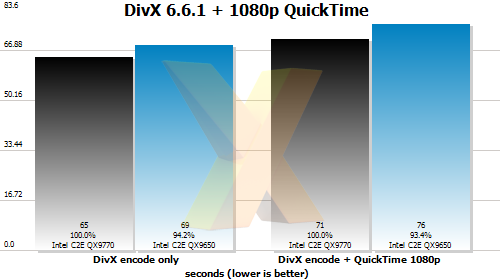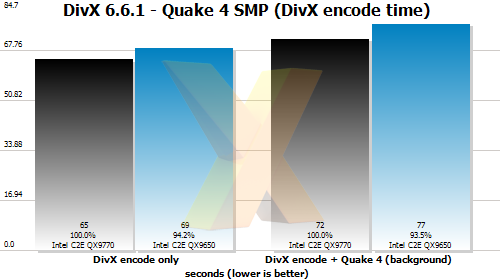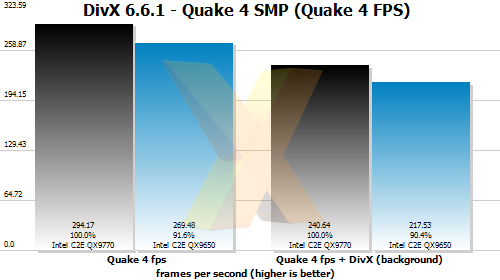Multi-tasking performance
Single benchmarks often make it difficult to see the benefit of multi-core processors, since they leave two or three cores sitting around idle.
However, the reality is that few people using PCs only carry out one task at a time - they have lots of apps on the go and that's when the true benefit of multi-core processors can be seen.
For our first test we run our DivX encoding benchmark while playing back a 1080p QuickTime-encoded video.
We record the total times taken to complete the DivX encode and compare them with the original DivX-only results. Naturally, we also take a look at the QuickTime playback, to see if we can spot any dropped frames during playback.
After that, we run the DivX encoding test at the same time as our Quake 4 game test. This allows us to see how a heavy, multi-threaded, load affects the performance of the DivX encoding and the impact on the performance of Quake 4.

The additional load imposed by decoding the QuickTime 1080p clip is consistent between the processors.

The same goes for running Quake 4 in the background, too.

Finishing off a predictable array of results, both Core 2 Extreme QX processors suffer a minor blip in Quake 4 fps when DivX is run in the background. The game plays smoothly in both cases, though.









